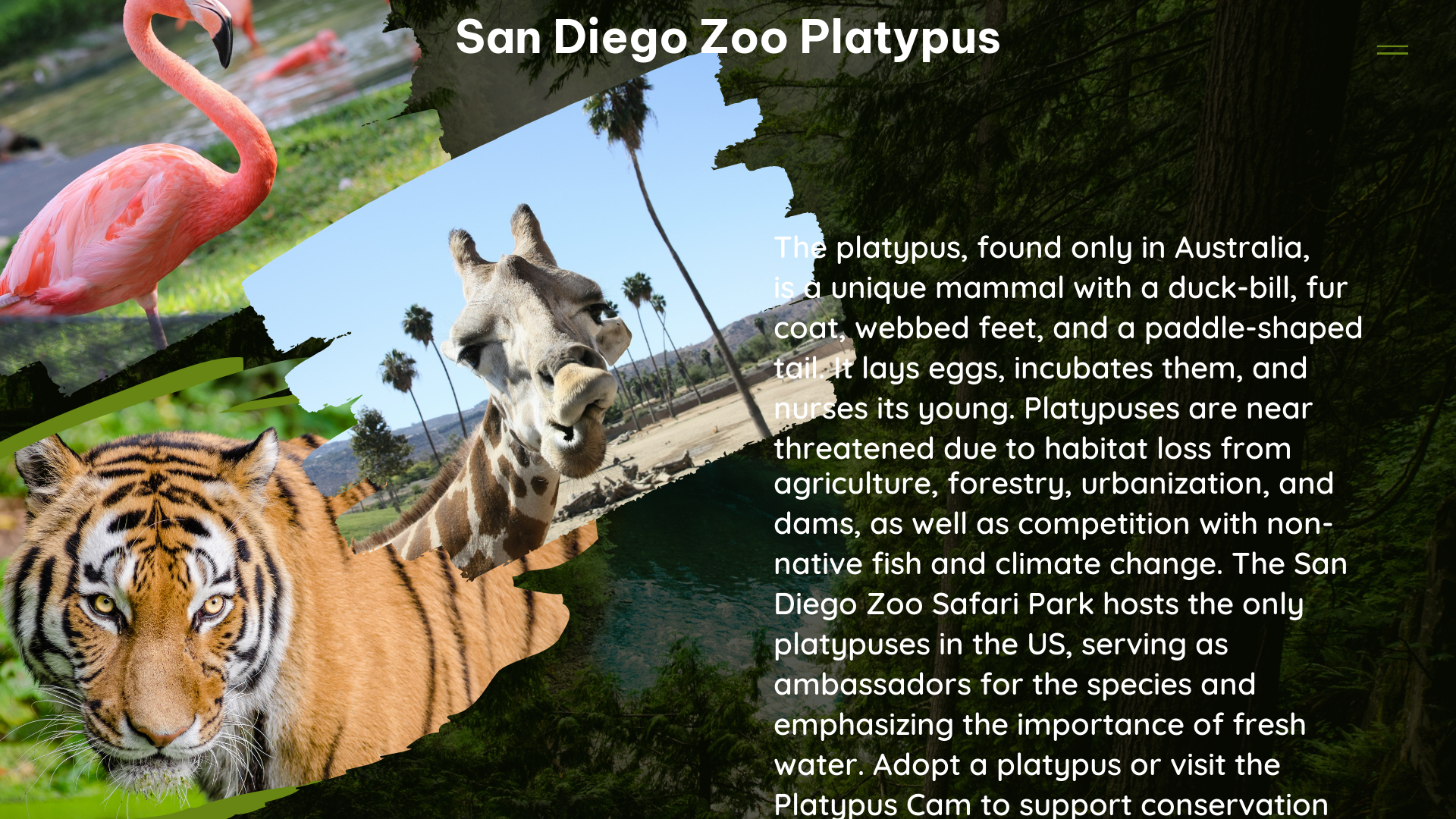The San Diego Zoo Safari Park is home to two of the most unique and elusive mammals on the planet – the platypus. As the only location outside of Australia to house these extraordinary creatures, the San Diego Zoo offers a rare opportunity for visitors to observe and learn about these egg-laying, venomous, and duck-billed wonders.
Species Overview
The platypus is a monotreme, one of only five egg-laying mammals in the world. Native to eastern Australia, these semiaquatic creatures are known for their distinctive features, including a duck-like bill, webbed feet, and a tail resembling that of a beaver. Platypuses are also unique in their ability to produce venom, with males possessing a venomous spur on their hind legs.
Conservation Status

The International Union for Conservation of Nature (IUCN) lists the platypus as Near Threatened, primarily due to habitat loss, climate change, and other human-induced threats. The San Diego Zoo Safari Park’s collaboration with the Great Australian Platypus Search (GAPS) project aims to map the current distribution of platypuses in southeastern Australia, contributing to the conservation efforts for this unique species.
Housing and Collaboration
The San Diego Zoo Safari Park is home to two platypuses, the only ones outside of Australia. The zoo’s partnership with the GAPS project allows them to contribute to the comprehensive survey of platypus populations in their native habitat.
Hours and Rates
The San Diego Zoo Safari Park is open daily from 9 a.m. to 6 p.m. (last entry at 5 p.m.). As of May 23, 2024, one-day admission is $62 for adults and $52 for children (ages 3-11). Children under 3 are free.
Platypus Cam
Visitors to the San Diego Zoo Safari Park can enjoy a live stream of the park’s platypuses through the Platypus Cam, providing a unique opportunity to observe these elusive creatures in their habitat.
Habitat and Behavior
Platypuses are most active at night and sleep during the day. The San Diego Zoo Safari Park adjusts its lighting schedule to accommodate their natural behavior, with “daytime” starting at 10 p.m. and “sunset” at 8 a.m.
Diet and Feeding
Platypuses are carnivores, primarily consuming small freshwater crustaceans, such as crayfish. The San Diego Zoo Safari Park offers three varieties of crayfish to its platypuses, as well as mealworms, black worms, earthworms, ghost shrimp, and crickets.
Platypus Care and Enrichment
As part of the GAPS project, the San Diego Zoo Safari Park tests water samples for traces of environmental DNA (eDNA) to create a map of waterways where platypuses are present. The park also uses specialized nets to physically examine individual platypuses for overall health evaluations.
Visitor Experience
The San Diego Zoo Safari Park’s Walkabout Australia exhibit, home to the Nelson M. Millsberg Platypus Habitat, has been recognized with Top Honors in AZA’s Exhibit Award for 2020. This exhibit allows visitors to connect with rare, elusive platypuses and learn about the zoo’s conservation efforts.
References:
– San Diego Zoo Wildlife Alliance – Platypus
– San Diego Zoo Safari Park – Platypus Cam
– San Diego Zoo Stories – My Mornings with Platypus
– San Diego Zoo Safari Park – Platypus
– San Diego Zoo – Platypus
